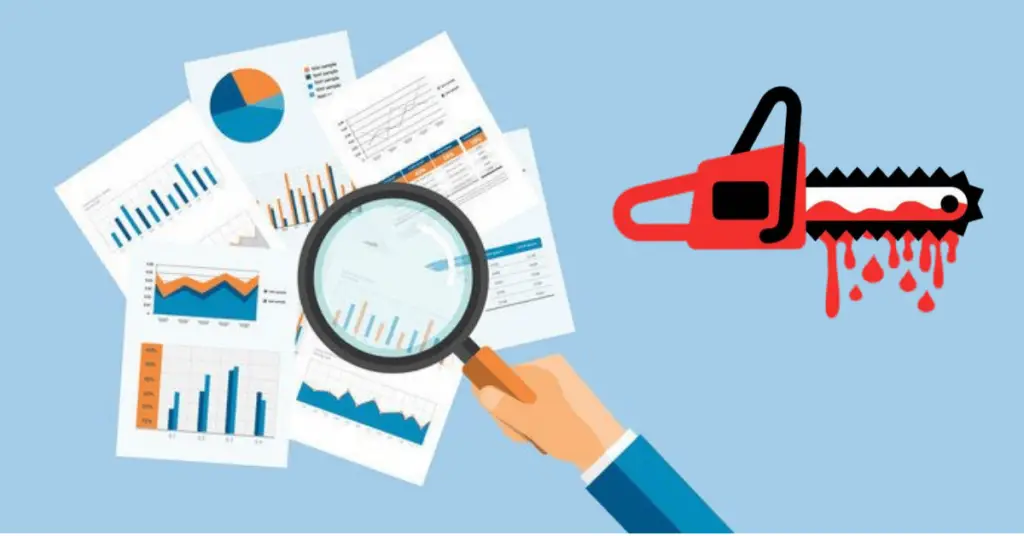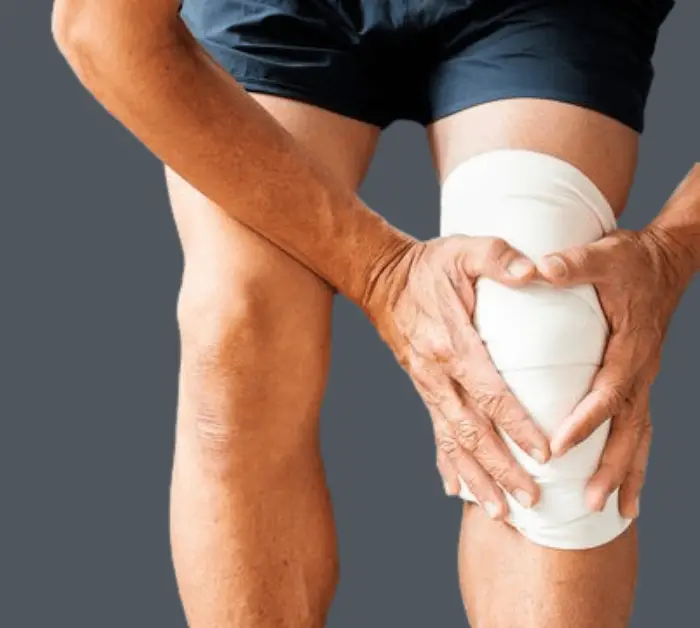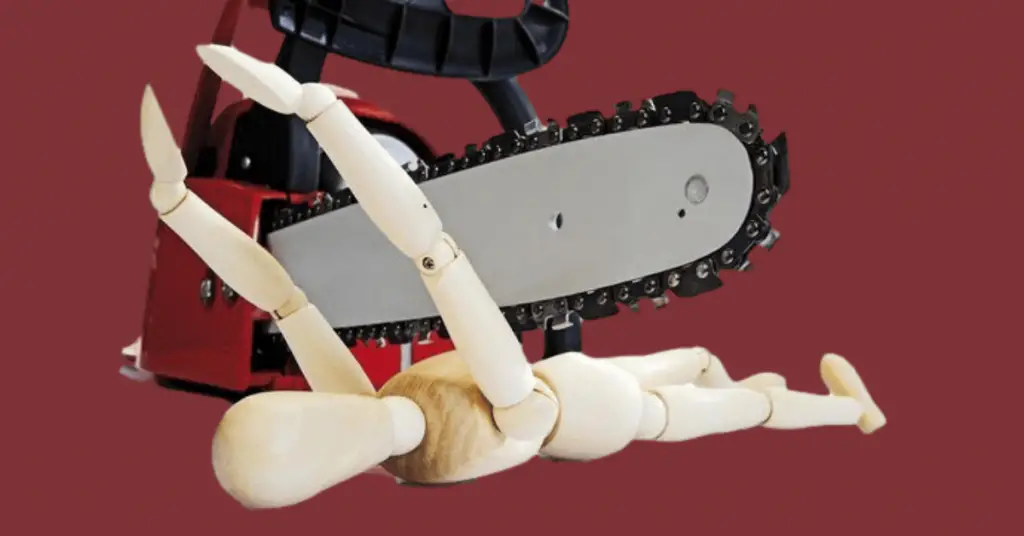How Many Chainsaw Accidents Happen in A Year (Explained)
Each year, nearly 36,000 people are injured in chainsaw accidents in the United States alone. The arms, hands, and legs sustain the majority of injuries.
The Author
key Notes:
- According to the Chainsaws At Work research project, there are over 36,000 chainsaw injuries annually, which breaks down to about 100 chainsaw injuries per day.
- An average chainsaw injury necessitates 110 stitches.
- The U.S. Consumer Product Safety Commission estimates that over 40,000 injuries related to chainsaws are treated in hospital emergency rooms each year.
- According to insurance industry data, chainsaws account for over 700,000 insurance claims each year. This suggests many more minor injuries go unreported.
- The death rate from chainsaw injuries is around 1%, meaning chainsaws account for over 300 deaths per year in the U.S. according to injury rates.
- Most accidents occur during tree felling and bucking tasks, kickback being a major culprit. Other factors are improper PPE, faulty equipment, and operator fatigue, inexperience or complacency.
- Professional loggers and arborists suffer a disproportionate share of accidents compared to casual users. Proper training is a key preventative measure.
- The upper limb, knee, calf, and hands account for more than 2/3 of injuries.
- Worker’s compensation insurance covers roughly 30% of chainsaw-related medical expenditures.
- According to the Davis-Garvin Insurance Agency, approximately 40% of all chainsaw accidents involve the legs, and over 35% involve the hand and wrist.
- Chainsaw injuries might be reduced by 75% by wearing chaps or chainsaw trousers and maintaining both hands on the saw.
Chain saws are a standard instrument used at home and in several professions.
Accidents occur frequently, and they happen so swiftly.
Every year, chainsaws hurt thousands of people all around the world.
Sadly, far too many people are killed.
On the other hand, this article will provide readers with a broad overview of how many chainsaw accidents happen in a year, chainsaw safety measures, why chainsaw operators struggle to follow safety practices, and the critical education and training required for employees who use chainsaws.
Chain saw-related injuries can be pretty serious.
Chainsaw accidents are some of the worst incidents that occur due to power tool misuse.
Chainsaws are mostly employed by expert loggers, laborers, landscapers, and even homeowners.
These incidents frequently result in catastrophic injuries and, in some cases, death.

The majority of chainsaw accidents are avoidable.
Therefore, due to others’ irresponsibility, victims sustain unanticipated and unpleasant injuries that may result in disability.
Each year, nearly 30,000 people are injured in chainsaw accidents in the United States alone.
The arms, hands, and legs sustain the majority of injuries. Chainsaw fatalities are uncommon, although they do occur.
Statistics on Chainsaw Injuries
Chainsaws are razor-sharp as they have been designed with motorized blades that spin too quickly for the human eye to see.
A chainsaw’s enormous force makes it an incredibly challenging power instrument.

Chainsaw accidents are particularly nasty due to the severity of the edges, the massive weight, and the powerful motor engine.
An average chainsaw injury necessitates 110 stitches.
The upper limb, knee, calf, and hands account for more than two-thirds of injuries.
Additionally, the head, body, and feet are frequently injured.
Most accidents occur on the job, and worker’s compensation insurance covers roughly 30% of chainsaw-related medical expenditures.
As per OSHA, 243 employees were killed in 2012 while doing the tree-trimming and clearing tasks.
The four leading causes of death in logging are: being hit by trees, getting caught in wood chippers, falling from trees, and being shocked by electric wires.
As per the Davis-Garvin Insurance Provider, an insurance underwriter specializing in loggers’ insurance, a typical chainsaw injury required 110 stitches even though the average medical expense was $5,600 in 1989.
In 2000, the associated expenditures were anticipated to exceed $12,000.
Medical expenses associated with chainsaw injuries exceed $350 million each year.
Annual workers’ compensation expenditures hit around $125 million.
Therefore, the life quality of wounded workers and; the cost of lower productivity cannot be estimated precisely.
However, they may constitute the single highest cost of chainsaw accidents.
A Few statistics are shown below

More than 28,500 chainsaw injuries occurred in the United States in 1999. Leg and knee injuries accounted for more than 36% of all injuries.

According to the Davis-Garvin Insurance Agency, approximately 40% of all chainsaw accidents involve the legs, and over 35% involve the hand and wrist.

Chainsaw injuries might be reduced by 75 percent by wearing chaps or chainsaw trousers and maintaining both hands on the saw.

How to overcome chainsaw accidents?
Given the inherent dangers of working with chainsaws and the preceding statistics, employees who are exposed to chainsaw operations must receive the appropriate education and skills training so that they can work safely and effectively, protecting themselves and their coworkers.

Employees must also be familiar with industry rules and be able to follow authorized work procedures.
Safety and skill education and training must be supported by management at all levels of any firm.
Safety Measures
Chainsaw accidents are due to a lack of attention or mistakes by those operating the dangerous equipment could be reduced through following preventive measures.
Safety equipment assists in preventing or mitigating the impact of accidents.

When using a chainsaw, one should always wear a hard hat to protect yourself against kickback injuries and flying debris.
Always use ear protection to avoid causing damage to your hearing.
Regularly clean and sharpen the chainsaw to reduce the need for more power, prevent kickback, and keep it functioning effectively.
Completing a chainsaw safety briefing to understand proper chainsaw operation can help reduce chainsaw accidents.
A chainsaw operator must accomplish the following before commencing the cutting task:
- Inspect the controls, chain tension, bolts, and handles for appropriate operation and adjustment according to the manufacturer’s specifications.
- Check that the chain is in good condition and that the lubrication reservoir is full.
- Keep a gasoline-powered saw at least 10 feet away from any potential ignition sources. According to the manufacturer’s recommendations, make sure the fuel is an appropriate blend of gas and oil.
- Make sure the gasoline container is metal or plastic, has a capacity of no more than 5 gallons, and has been authorized by a nationally known testing laboratory.
Final Thought
More study is needed to prevent and manage nonfatal chain saw injuries.
While the occupational industry must follow federal safety requirements and training while using chainsaws, there are no restrictions mandating training for those who buy a chainsaw for personal use.
According to older population-based research in Ireland, most accident patients did not wear protective gear.
Only a handful was proficient in chain saw operating, citing a lack of awareness and contempt for safety procedures.






